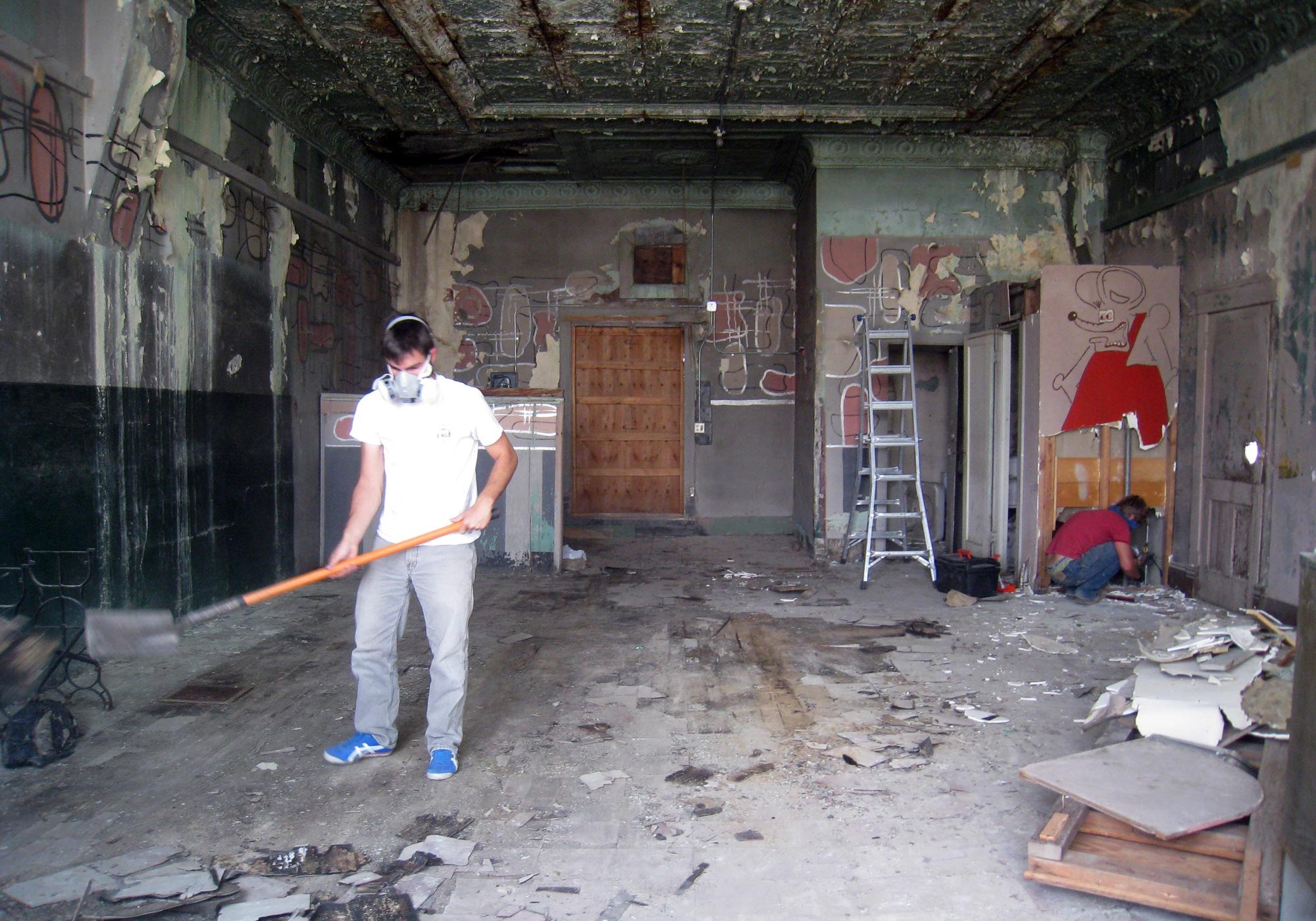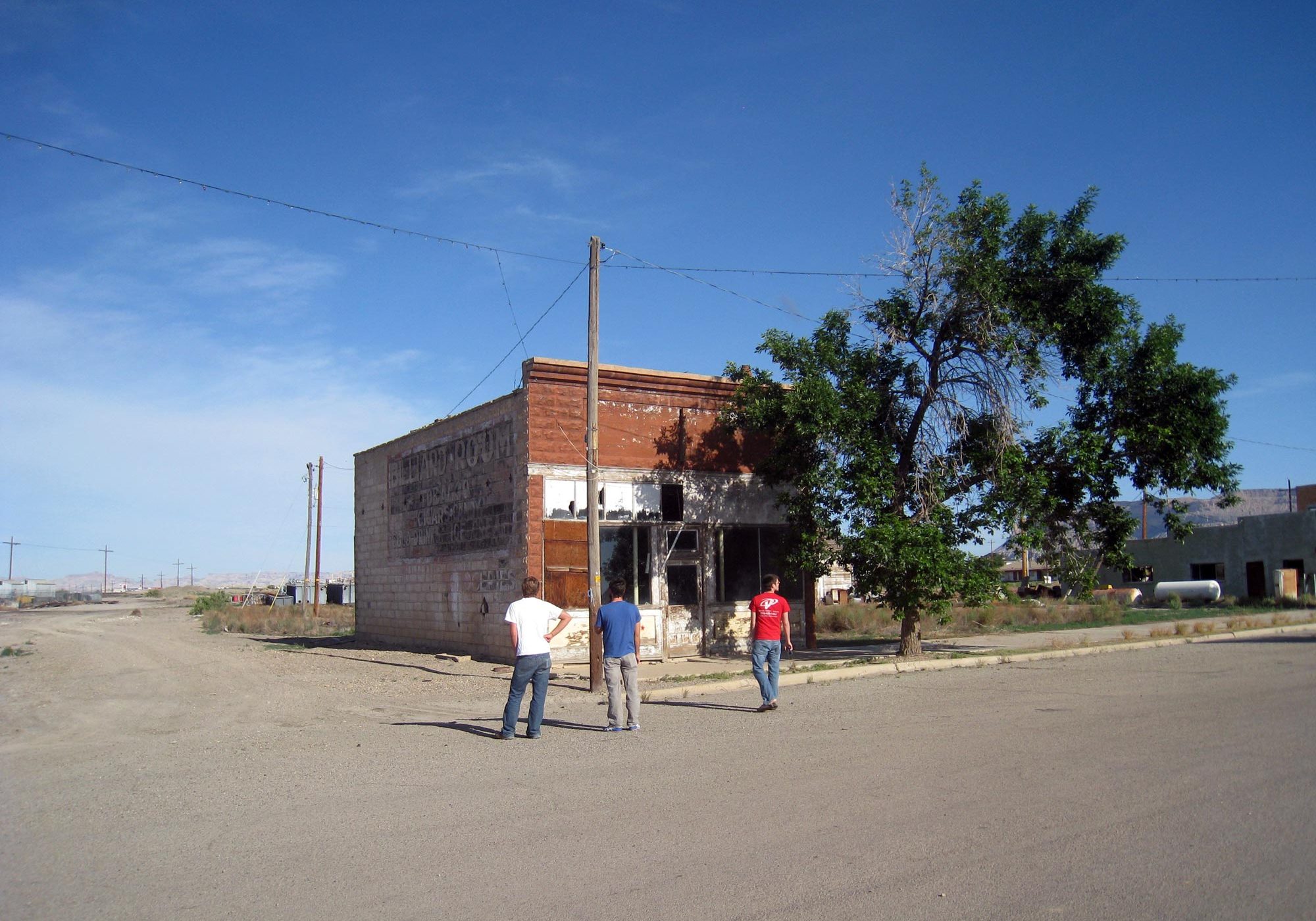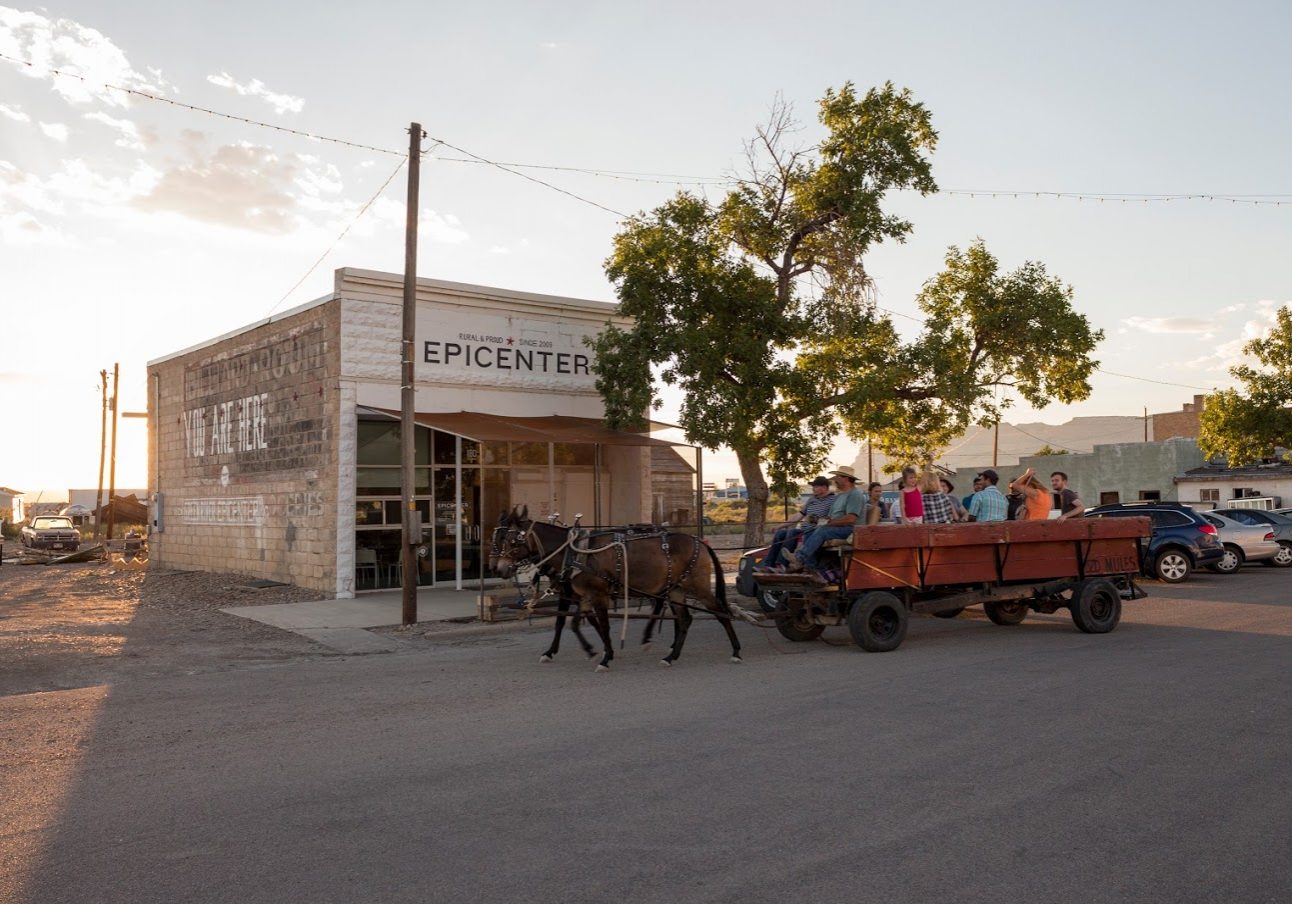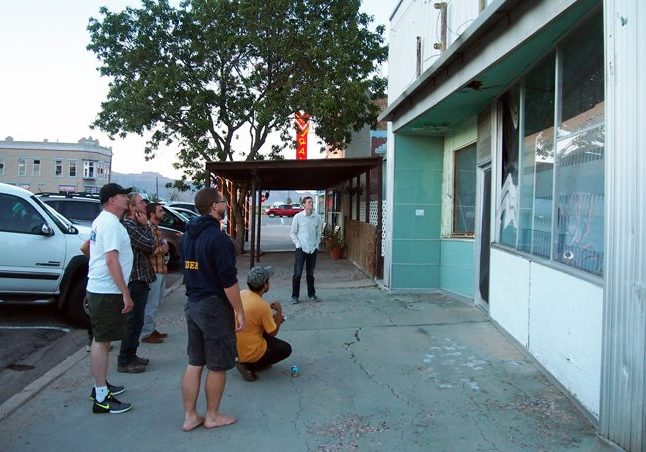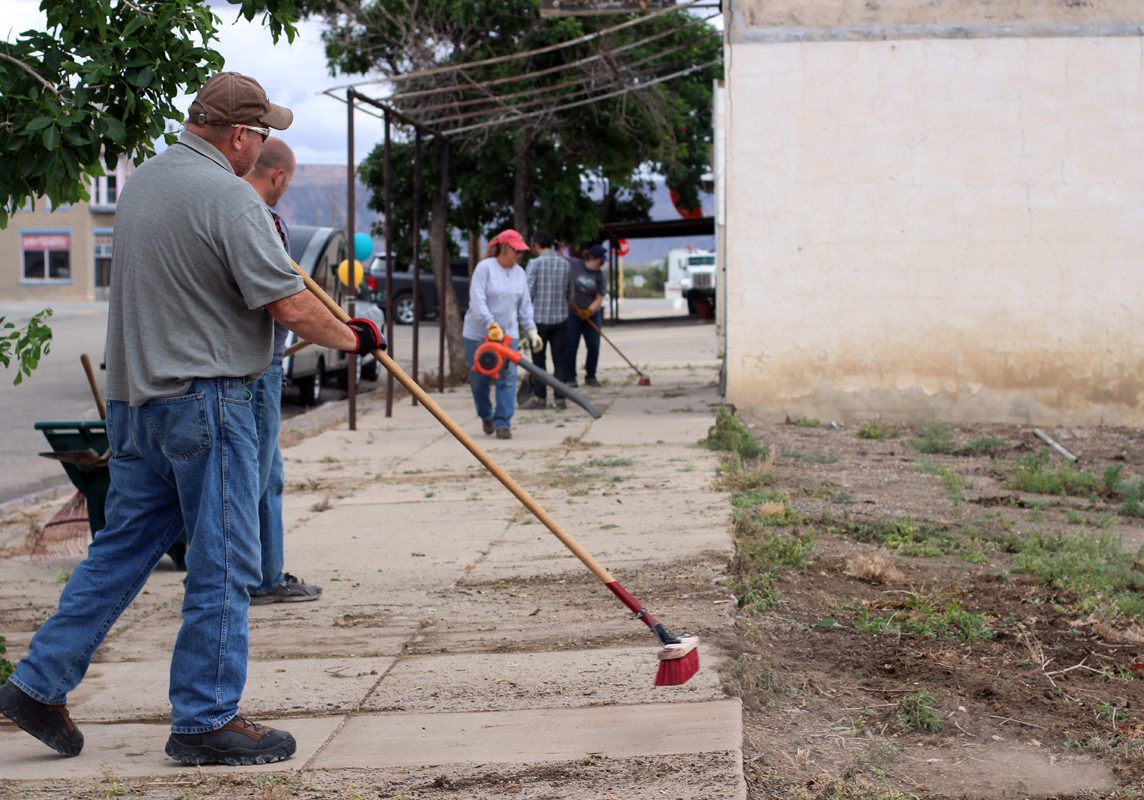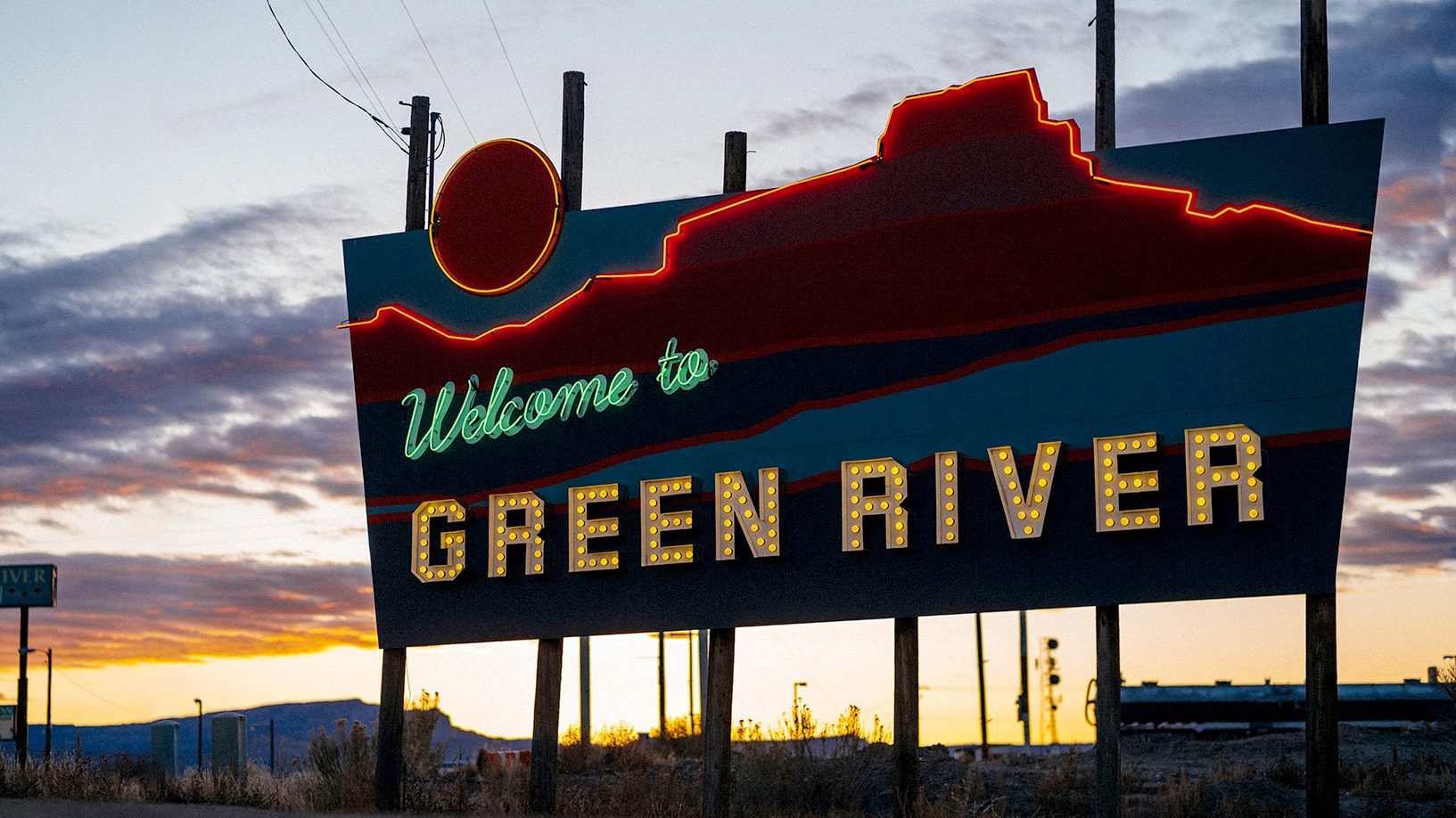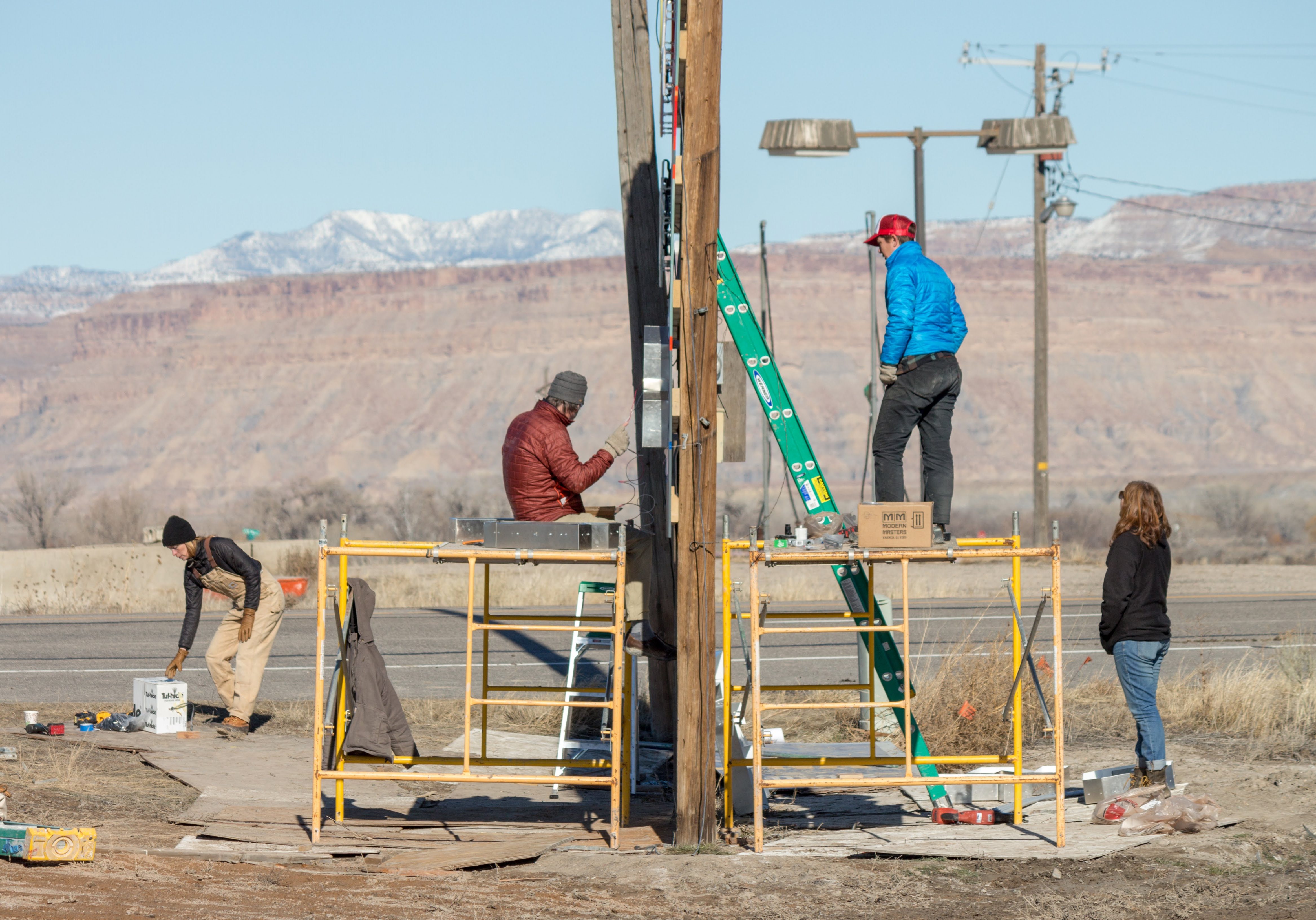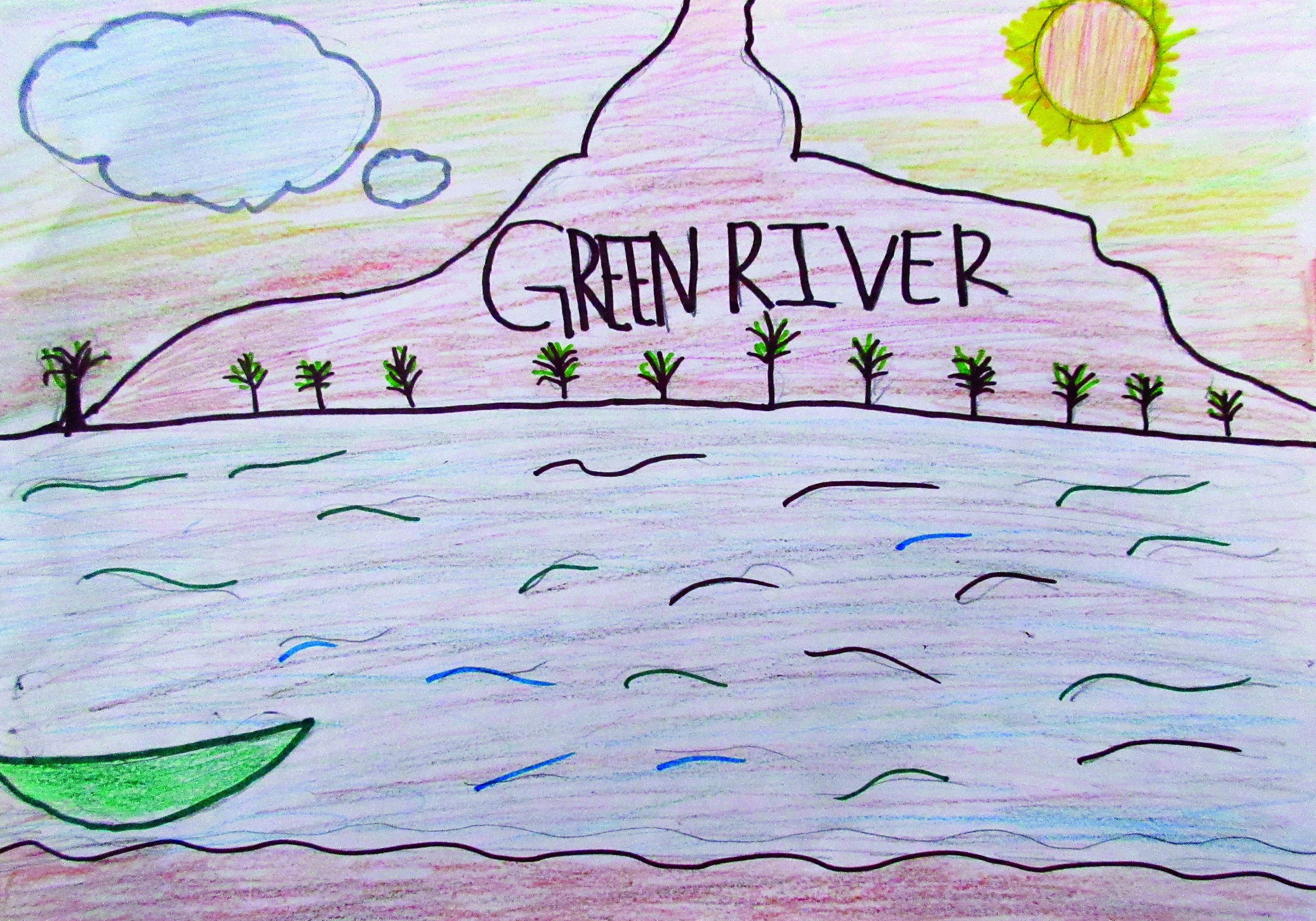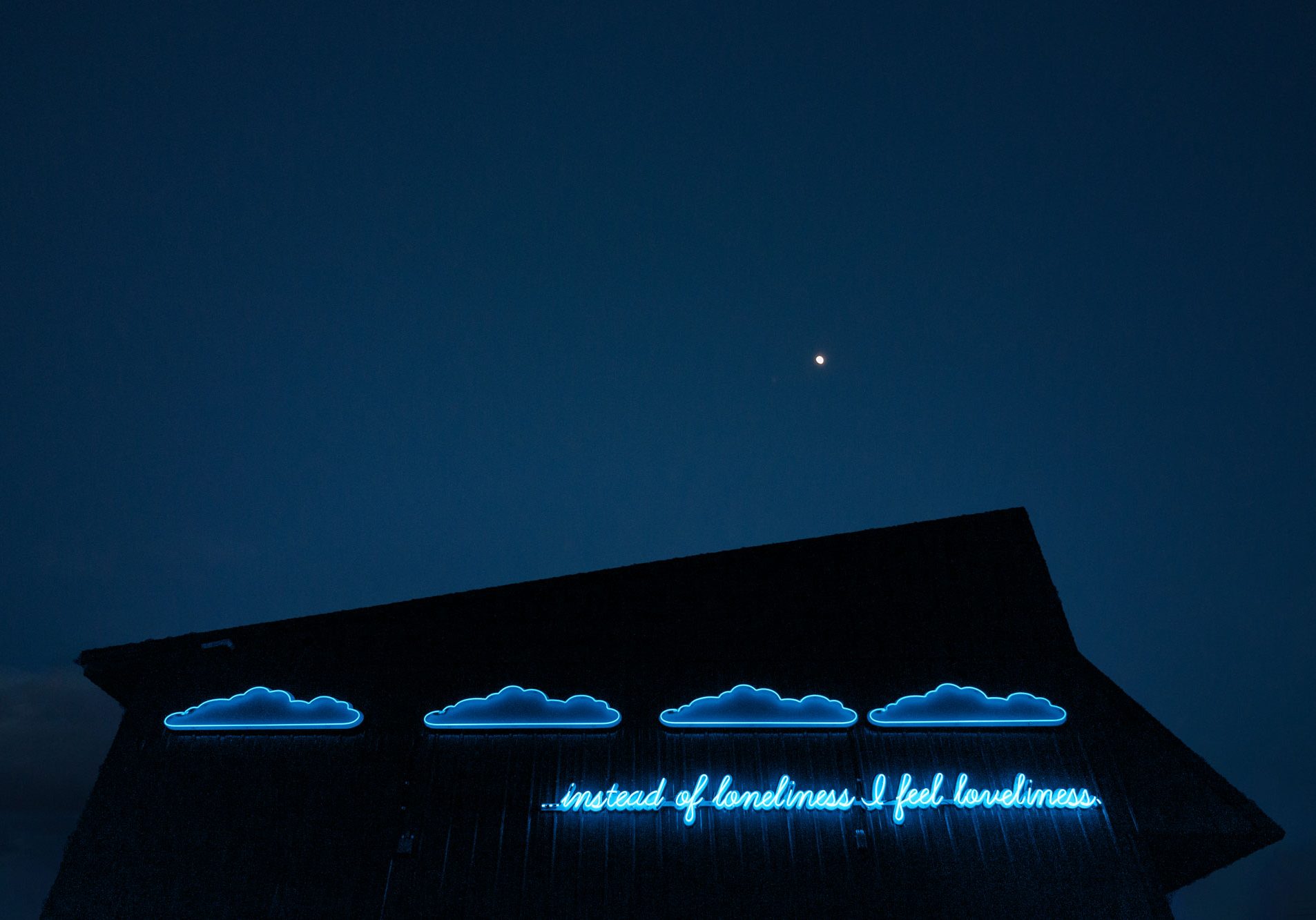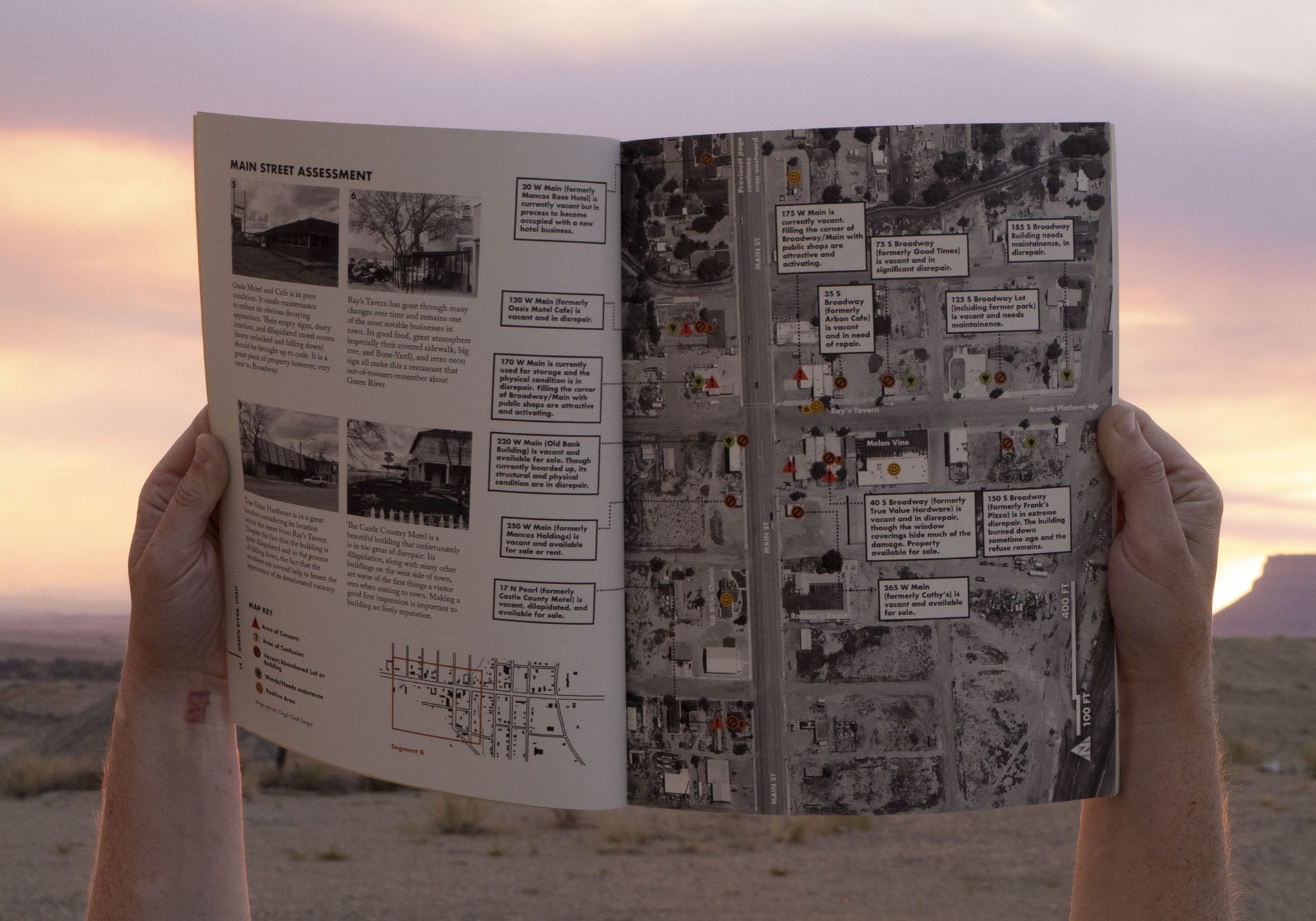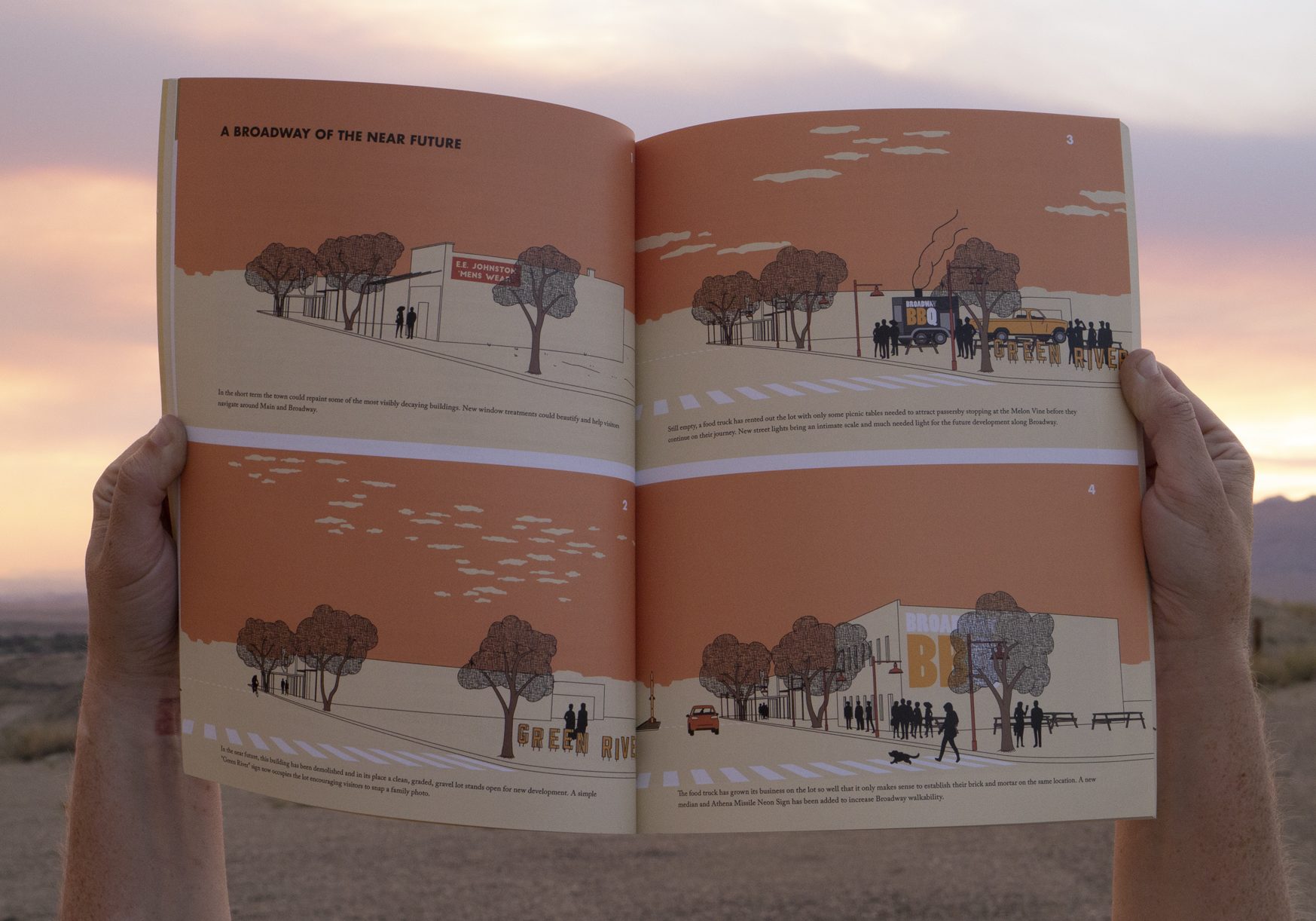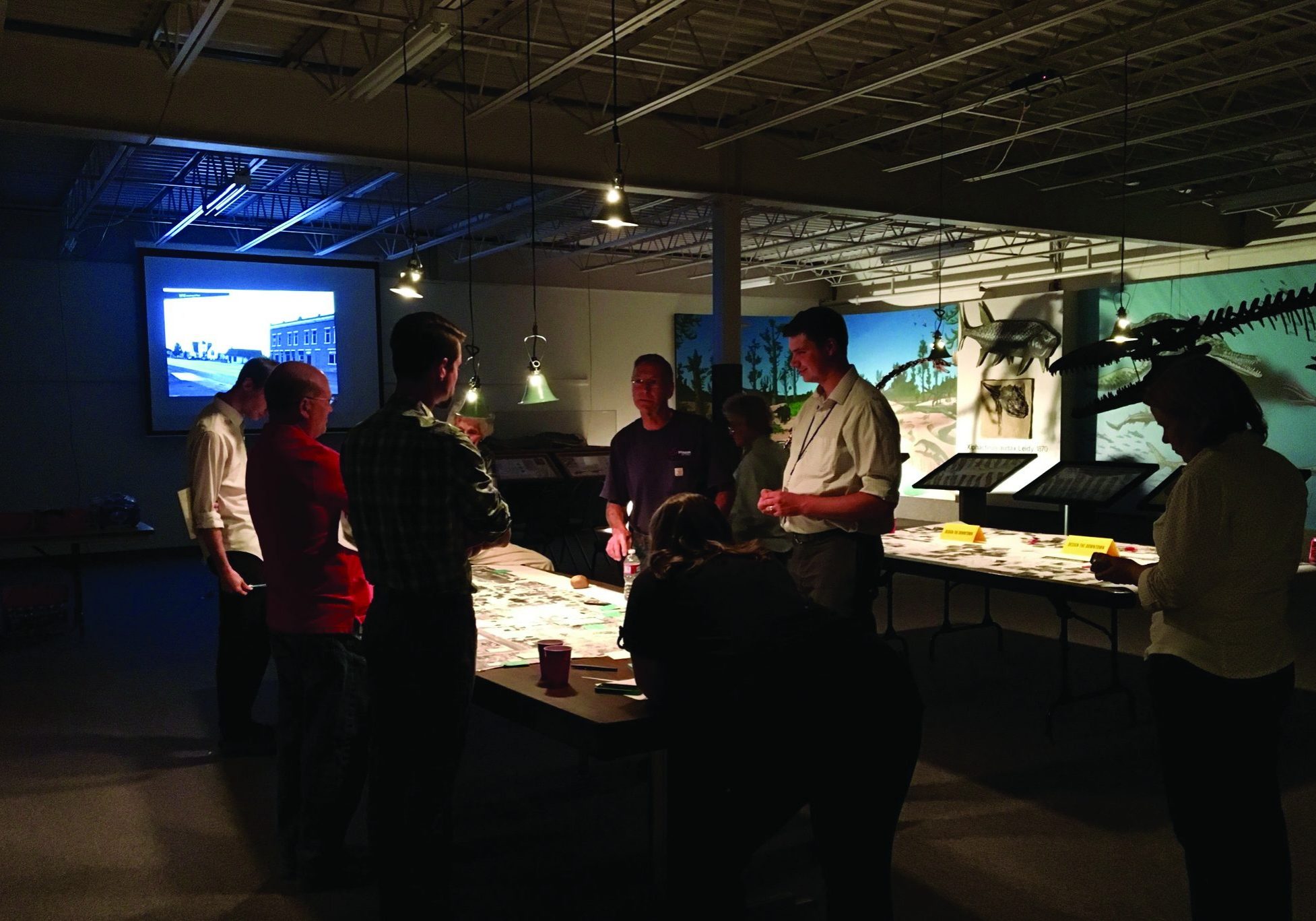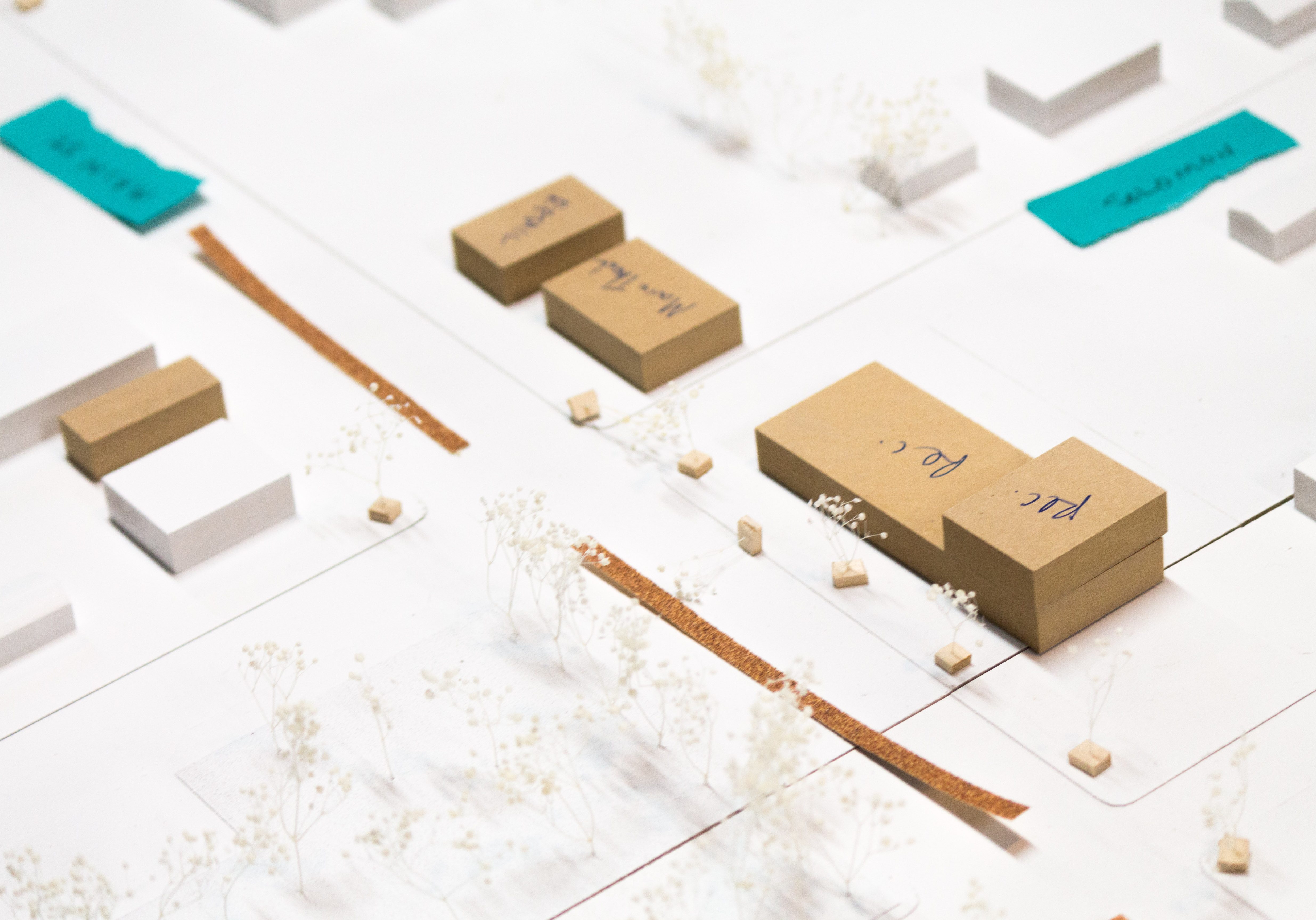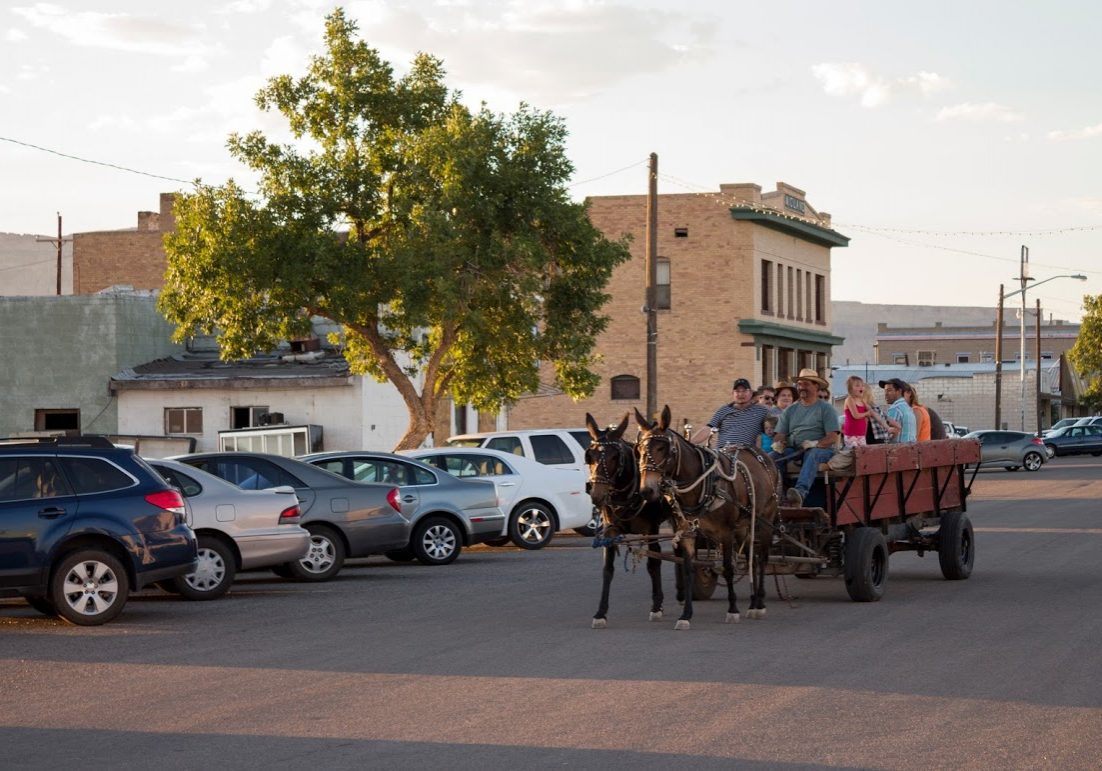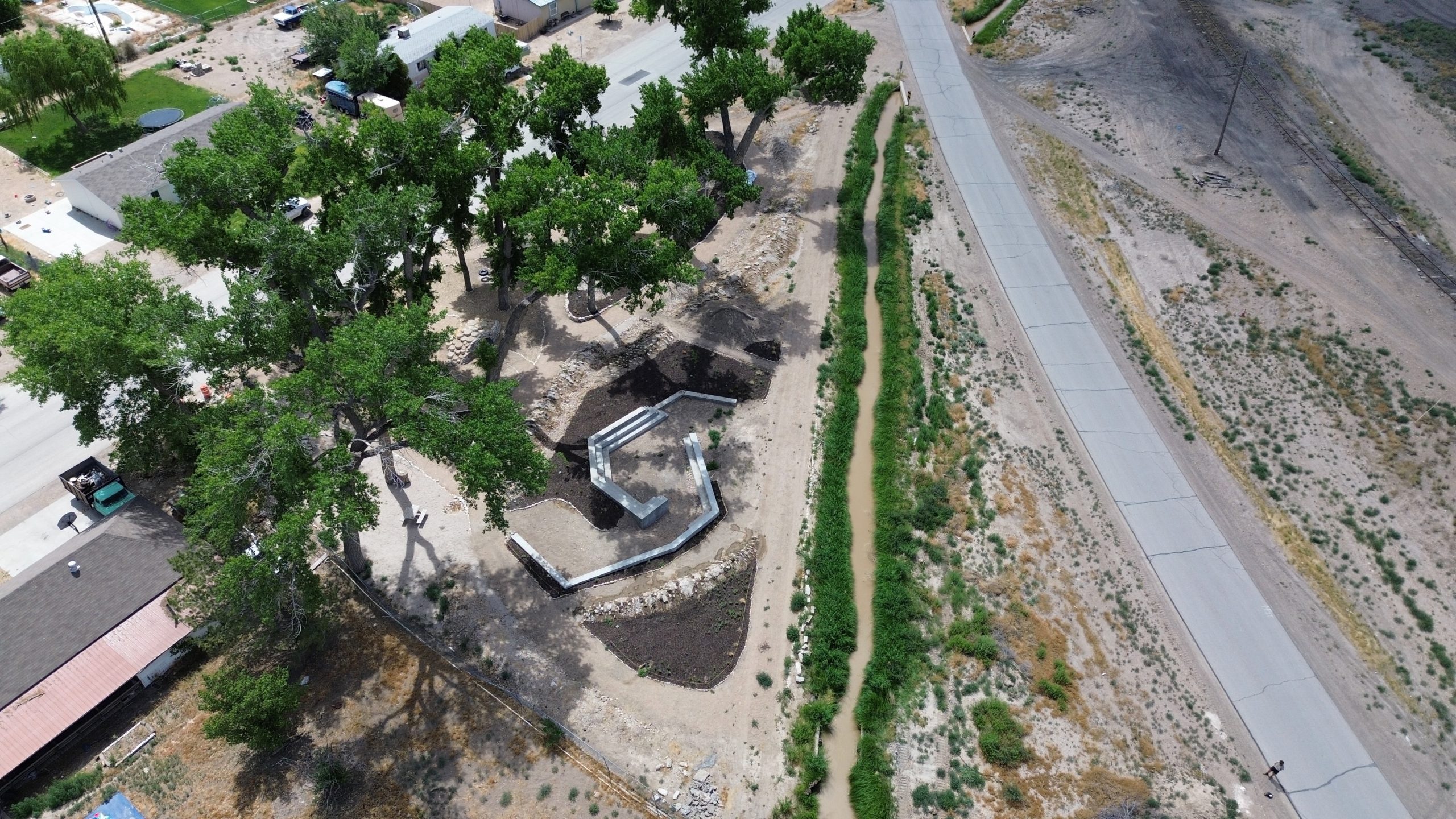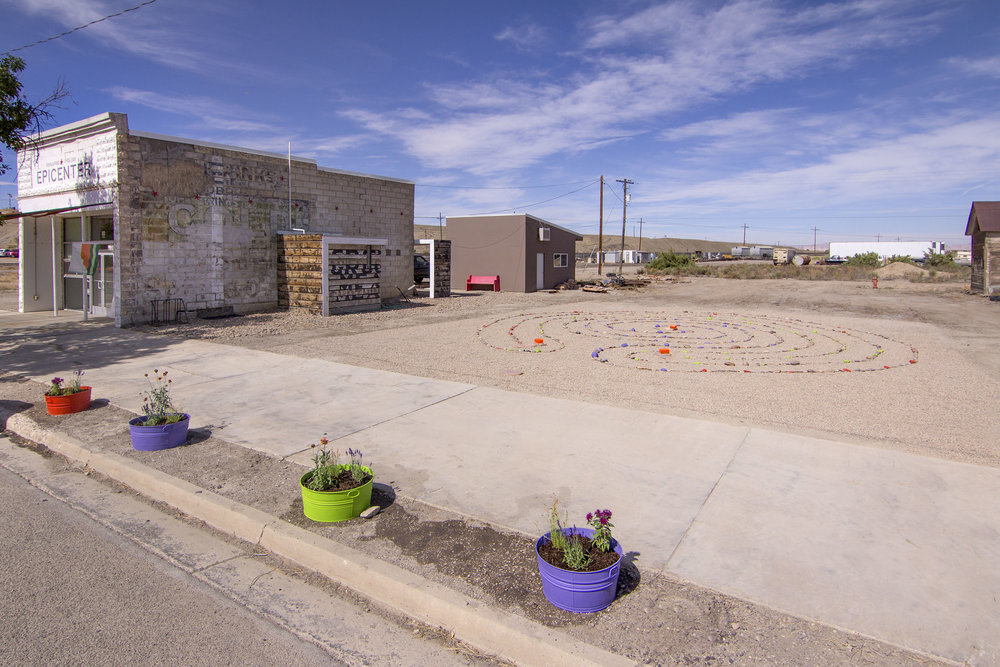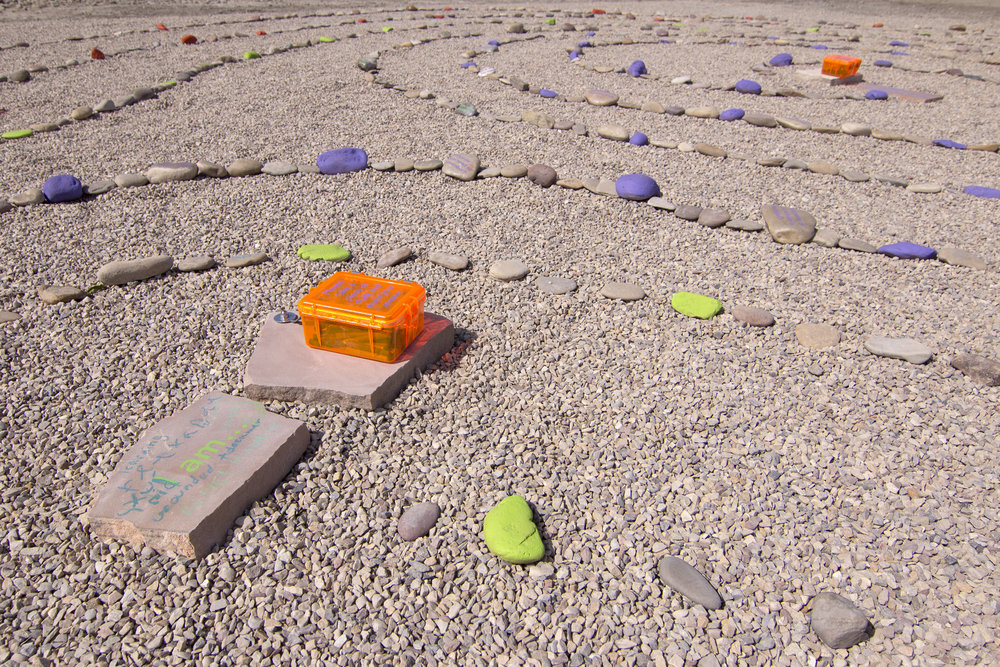We provide opportunities and space for social activities and cultural expression in order to attract and retain residents and visitors while improving the town’s built environment. We are determined to assist those who wish to rehabilitate their properties and provide spaces for social interaction.
Epicenter Headquarters
Before it became Epicenter’s home office, 180 South Broadway sat vacant for over a decade. Built around the turn of the last century, the building had previously been a block manufacturer’s office, bar and billiard room, and a storage facility. In 2010 Epicenter’s co-founders renovated the building with help from friends and volunteers.
We chose to renovate this historic building not because it was an easy project, but because we see the potential of Broadway. Historically the commercial and social hub of Green River, the street is home to some of the town’s earliest buildings and a few anchor businesses: Ray’s Tavern, Melon Vine Food Store, and the Amtrak stop. Unfortunately, many of the original storefronts on Broadway are in complete disrepair. We see the renovation of our building as a new catalyst for improving Broadway.
The initial renovation (2010-11), funded through a Rural Business Enterprise Grant from USDA and private match, was extensive: major foundation and footing repairs, a new roof and ceiling, new front and rear facades, and much more. The building now acts as the Epicenter headquarters, housing all of our day-to-day activities. We maintain the facility daily and adjust and modify as needed.
Windows on Broadway
To continue the Broadway revitalization efforts, Epicenter facilitated the installation of window displays in vacant storefronts on Broadway in 2013-14. The displays brought positive attention to Green River’s business corridor, created momentum for the larger Green River beautification efforts, and elevated community spirit. In these windows, we displayed works of art, historical photos, information about local tourist destinations and environment, and other pieces that highlight the community and its history. Displays rotated on a one to three month cycle and were installed and created by Epicenter’s Frontier Fellows, town citizens, high school interns, and other interested individuals.
GRIT
Initiated by Epicenter, and made up of highly motivated local residents and town officials, the Green River Improvement Team (GRIT) sought to beautify the community and build community spirit with as much vigor as the group’s name implied. GRIT prioritized projects that created a more inviting town, improved the appearance of derelict properties, and brought community members together to improve this place we call home. The group also installed benches and decorative planters on Main Street, improved the east entrance to town and welcome sign, installed the Spanish Trail silhouette sculptures, and facilitated many volunteer cleanups like Brooms on Broadway (pictured below).
Green River Lights
For many travellers Green River has always been a point on the way to another destination. But today with I-70 bypassing Main Street and gas stations on the edge of town, thousands of people “visit” our town each day without ever seeing the community that exists between exits 160 and 164. In 2014, we counted the number of daily cars that stop at gas stations on the exits, then counted the number that went into town instead of getting right back on the interstate. We found that 65% of interstate travellers that stop in “Green River” never actually come into town. As a part of Epicenter’s mission to bolster economic development and facilitate community pride, we have started to leave “breadcrumbs” for drivers to draw them into the town’s core.
With this in mind, designer Lisa Ward proposed to refurbish old and create new neon and lighted signs along Green River’s Main Street. Ward proposed 10 different designs to the community and ultimately two were selected: a new neon welcome sign for the west side of town and a new neon artwork on the west side of the Coffee Shop. In addition to leading visitors to town to patronize local businesses, the sign builds on Green River’s classic neon signs and celebrates the local landscape. The design was created with the help of Green River High School students who were tasked with drawing their own signs, many of which were similar to the final design depicting Gunnison Butte. This welcome sign has already become a point of pride for local residents and a popular attraction for visitors.
The neon sign on the side of Green River Coffee Company features a quote from Edward Abbey's Desert Solitaire, reclaiming our town's isolation as a point of pride and source of inspiration. Both signs were unveiled at an event called Ignite the Nite hosted by Epicenter and the City of Green River at the city safety building on Broadway. Ward and fellow artist Marisa Frantz put on a pyrotechnics show to kick off the event, culminating in the lighting of a bonfire in front of the firehouse. Inside, Clive Romney of Utah Pioneer Heritage Arts, with Hank Mason and Jana Wells of Grand Junction performed original songs of Utah’s rural heritage, pioneers, and folktales; local residents contributed chili, hot cocoa, and their voices to the sing-alongs.
Waypoint: Green River
Waypoint: Green River was initiated by Epicenter, in partnership with the City of Green River to map a detailed plan for the future of downtown Green River. This document, made possible by input from local residents, looks at our history, data, and neighboring towns to outline recommendations for appropriate reinvestment in Green River’s downtown. This plan was shaped through surveys, large community meetings, conversations with partner organizations, and focus group discussions. As with other planning studies, it is intended to be a working document that we can refer to for guidance in the redevelopment and rejuvenation of the downtown area.
The document first focuses on Green River’s past and present, current assets and challenges. A description of what downtown revitalization can do for the future of Green River comes next, followed by a summary of downtown’s past and the forces that shaped it. A brief narrative on the planning process steps follows this, which leads to a description of the overarching principles or “big ideas” the community’s input led to. That insight gleaned from the community is then reflected in suggestions and recommendations for downtown improvement, which are separated by theme. The final, and largest part of the document, is an appendix filled with short downtown development resource guides, further documentation of the public input process, and more studies that analyze and demonstrate the town’s built and cultural character.
PEARL BAKER PARK & OUTDOOR CLASSROOM
While master planning Epicenter’s Canal Commons housing development, the community insisted that this part of the site be restored back into a public park. After some research, it was confirmed that this site was the original town park, and many of the cottonwoods are over 50 years-old. This exciting news, as well as both the ideal location next to the canal sealed the deal. The community overwhelmingly chose to honor Pearl Baker, a much beloved local figure, by naming the park after her.
After the naming, Epicenter formed a local community park team to prep the site and to co-design the park. Many people have contributed to the design of the park, including community members, professional landscape designers, AmeriCorps members, local teens and kids, and local contractors and specialists. This team agreed the park should have natural features, use local materials and native plant species, and be educational for both residents and visitors. They wanted a space that was activated, but not necessarily sports-centric. The result is a series of walking paths, picnic areas, natural playscapes, and an outdoor classroom all adorned with native species of plants.
The outlaws who once hid in the deep canyons of Robbers Roost were long gone by the time Pearl Baker and her family moved to that rugged region of southeastern Utah in 1908. But the legacy of these bandits lived on in the stories locals told about Butch Cassidy and his posse of thieves, the Wild Bunch. As a child, Baker wrote down everything she could remember from those stories. Eventually she used those notes to inform her first novel, “The Wild Bunch at Robbers Roost,” which inspired one of the most famous Western films of all time, “Butch Cassidy and the Sundance Kid.” As an adult, Baker lived in Green River, where she tutored children, and Hite, where she taught elementary school. In an interview, Baker recalled: “We never did have any playground equipment, and I was kind of sad about that.” The play structure and outdoor classroom at Pearl Baker Park is dedicated to Baker, the author, teacher, and iconic voice of the Wild West, and to the children of Green River, so they may continue to play and learn in her honor. — Emily Arntsen, Epicenter Frontier Fellow
As of early 2024, the Epicenter team and volunteers continue work on the park with the intent to deed it back to the City of Green River in early 2025.
The Future
Waypoint continues to guide Epicenter's work to revitalize downtown and has shaped projects in the year since its creation. A few items within the plan have already been completed, but much of the is currently being implemented. We work with the City, property owners, and our partners to take small incremental steps. For example, we installed temporary lighted benches on Broadway and completed the transformation of one vacant, hazardous lot into a labyrinth to be used as a public meditative space by Frontier Fellow Katie Hargrave (pictured below). With the City’s recently-established Regional Development Agency we’re exploring new possibilities such as mixed-use development on Broadway one day. Until then, we're focused on our downtown property adjacent to Broadway where we are developing affordable housing (Canal Commons, see Housing) and a new public park (Pearl Baker Park & Outdoor Classroom, above).
